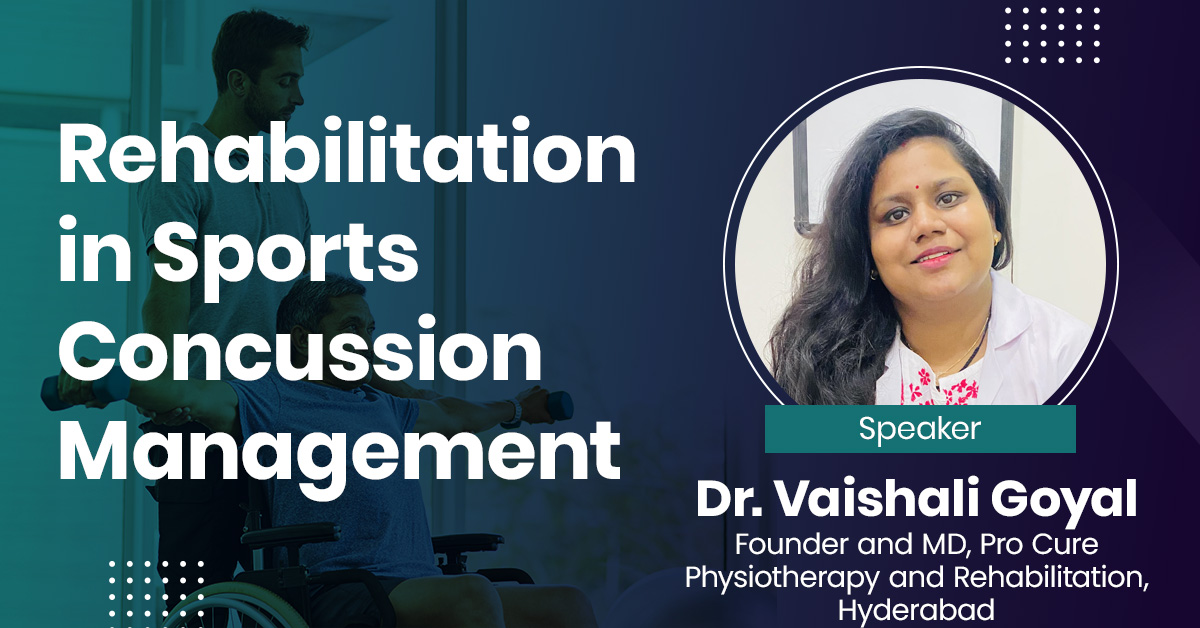- 87.5k views
Rehabilitation in Sports Concussion Management
Rehabilitation in sports concussion management is a crucial aspect that focuses on a gradual and individualized return to physical and cognitive activities. This process involves a stepwise progression, closely monitored by healthcare professionals, aiming to ensure the athlete's complete recovery, minimize the risk of recurrent concussions, and address any lingering symptoms through targeted therapies and neuromuscular training. Comprehensive rehabilitation not only facilitates the return to sport but also prioritizes the long-term well-being of the athlete by addressing physical, cognitive, and emotional aspects of recovery. In sports concussion rehabilitation, the initial phase often involves cognitive rest and symptom management, allowing the brain to heal. As symptoms improve, a structured rehabilitation program integrates gradual exertion, balance exercises, and sport-specific drills to assess and enhance physical and cognitive capabilities. Collaborative efforts between healthcare providers, athletic trainers, and the athlete are essential in tailoring the rehabilitation plan to individual needs and ensuring a safe and effective return to play. Emphasizing education on injury prevention, proper technique, and ongoing monitoring further contributes to the holistic approach of sports concussion rehabilitation, prioritizing both short-term recovery and the athlete's long-term health
About the Speaker

Dr. Vaishali Goyal
Founder and MD, Pro Cure Physiotherapy and Rehabilitation Centre
Dr. Vaishali Goyal is an exceptional and dedicated healthcare professional whose passion for physiotherapy and holistic well-being shines through her impressive career journey. As the founder of PRO CURE PHYSIOTHERAPY AND REHABILITATION CENTRE, she exemplifies entrepreneurial spirit and expertise in manual therapy, biomechanics, and posture analysis.
Upcoming Case Discussions
Impact of Endometriosis on Fertility
Endometriosis, a condition where endometrial-like tissue grows outside the uterus, can significantly impact fertility. It causes inflammation, scarring, and adhesions that may distort pelvic anatomy, block fallopian tubes, and impair ovarian function. Endometriosis is also linked to hormonal imbalances and poor egg quality, reducing the chances of conception. Symptoms like chronic pelvic pain and painful intercourse further complicate fertility. Diagnosis often requires laparoscopy, while management includes pain relief, hormonal therapy, and assisted reproductive techniques like IVF. Early intervention with medical or surgical treatment can improve reproductive outcomes, but severe cases may necessitate advanced fertility treatments for conception.
Hyperlipidemia: From Diagnosis to Treatment
Hyperlipidemia is a condition characterized by elevated levels of lipids, such as cholesterol and triglycerides, in the blood, which can increase the risk of cardiovascular diseases. Diagnosis typically involves blood tests measuring lipid profiles, while treatment focuses on lifestyle changes, such as diet and exercise, alongside medications like statins to manage cholesterol levels and reduce cardiovascular risk. Regular monitoring is essential for effective management and prevention of complications.
Acne: Disorders and Treatment Approaches
Acne is a common dermatological condition caused by clogged pores, excess sebum production, bacterial growth, and inflammation. It can manifest as blackheads, whiteheads, papules, pustules, or cysts, often leading to scarring if untreated. Various factors, including hormonal changes, diet, stress, and genetics, influence its severity. Treatment approaches range from topical and oral medications, such as retinoids, antibiotics, and hormonal therapy, to advanced procedures like chemical peels and laser therapy. A personalized skincare regimen, along with lifestyle modifications, plays a crucial role in managing and preventing acne.
Lung Ultrasound in Acute Respiratory Failure
Lung ultrasound has emerged as a vital, non-invasive tool in the rapid assessment of acute respiratory failure. It provides real-time imaging to differentiate conditions like pneumonia, pulmonary edema, pneumothorax, and pleural effusion with high accuracy. Compared to traditional chest X-rays, lung ultrasound offers superior sensitivity, especially in critically ill patients where bedside evaluation is crucial. Its ability to guide immediate clinical decisions improves patient outcomes and reduces unnecessary radiation exposure. With standardized protocols like the BLUE (Bedside Lung Ultrasound in Emergency) protocol, it enhances diagnostic efficiency in emergency and ICU settings.
Gallstone Disease & Cholecystitis: When to Operate?
iGallstone disease and cholecystitis are common conditions requiring careful evaluation to determine the need for surgery. Symptomatic gallstones causing recurrent pain, nausea, or complications like cholecystitis often necessitate cholecystectomy. Acute cholecystitis, characterized by inflammation, fever, and right upper quadrant pain, typically requires early surgical intervention to prevent complications like perforation or sepsis. In high-risk patients, conservative management with antibiotics and drainage may be considered. Elective surgery is recommended for asymptomatic patients with high-risk factors, such as large gallstones or gallbladder polyps, to prevent future complications.







